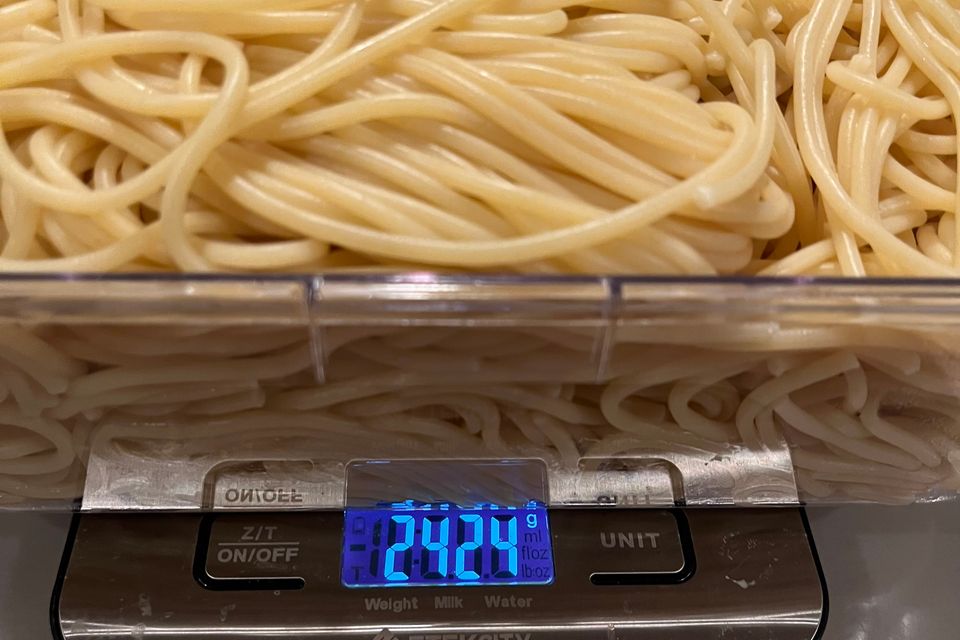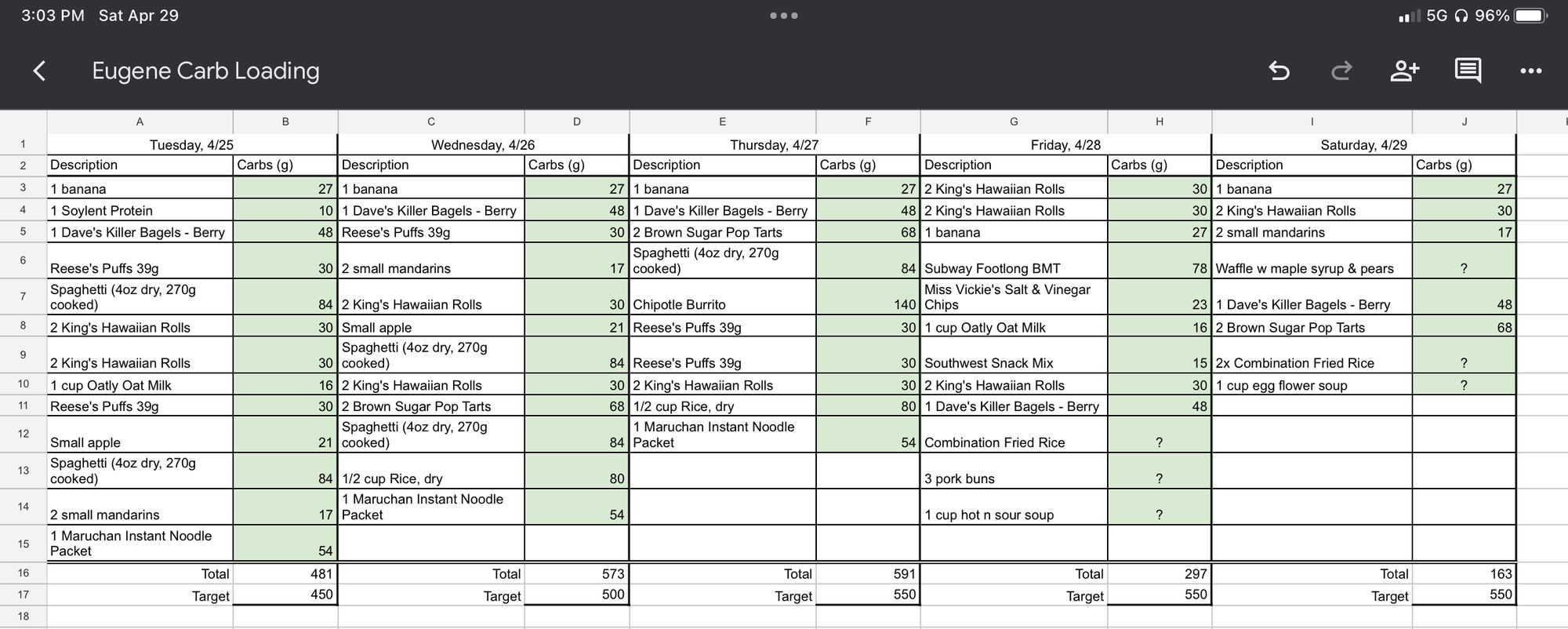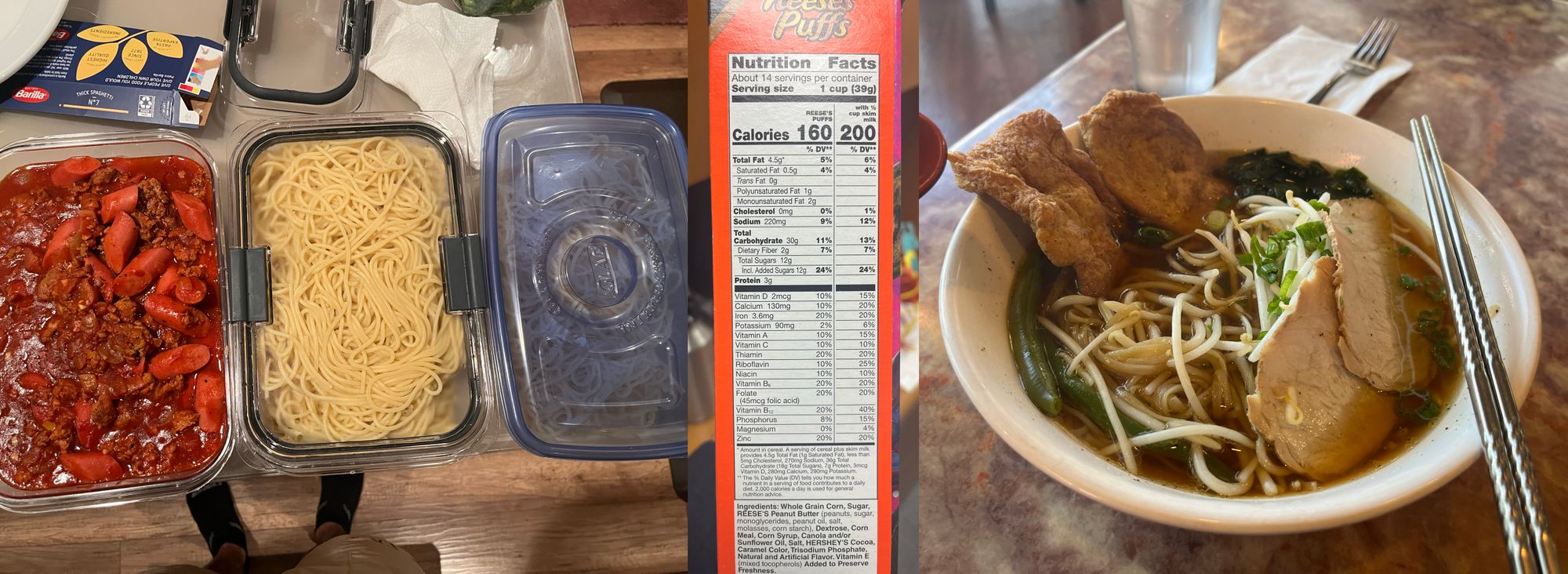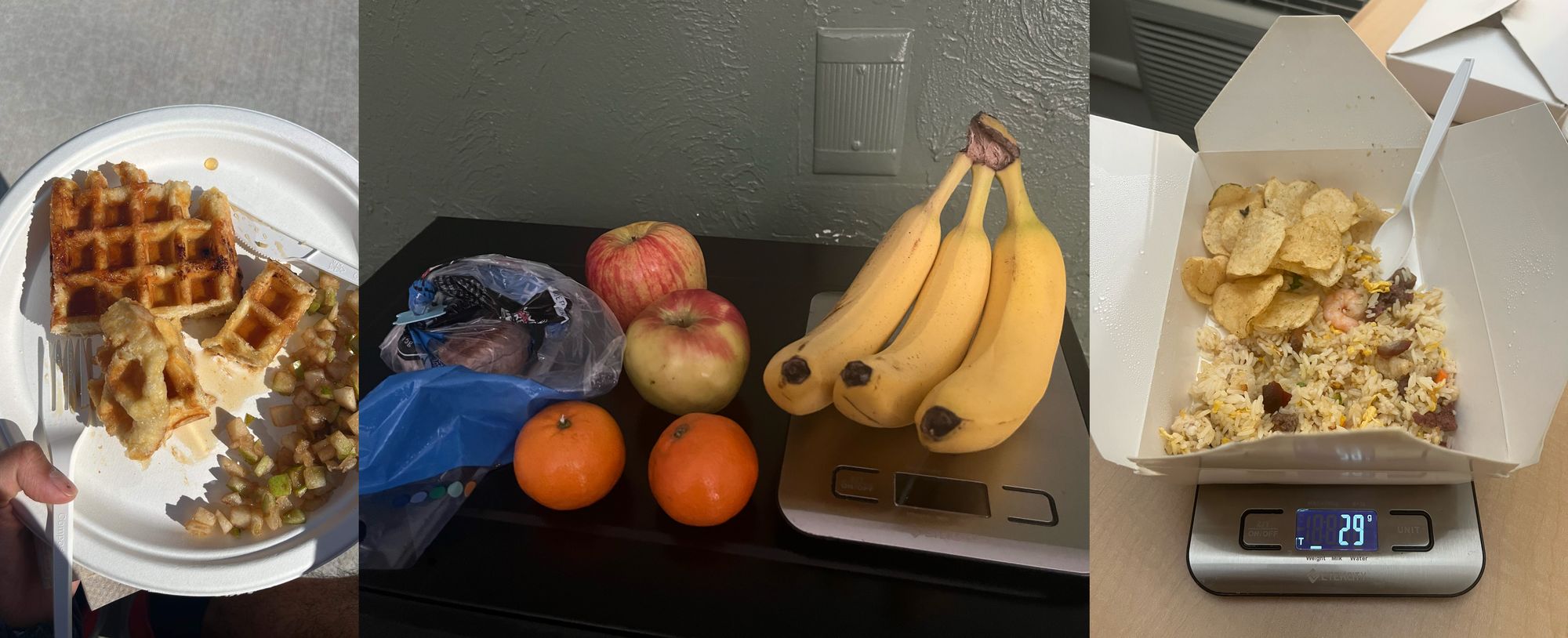13 - Carb Loading (for the Eugene Marathon)

This past week in preparation for the Eugene Marathon, carb loading has been fixed at the top of my mind. I’ve spent the past few days stuffing my mouth and my belly with rice, King’s Hawaiian Sweet Rolls, and Filipino spaghetti, just to name a few. Before I get into the weeds, quick disclaimer.
Disclaimer: This blog post is not intended as a guide for carb loading and is not meant to be taken as dietary advice. In this post, I aim to share what carb loading looks like for me, as I prep for this specific race. Please do your research as you make your own dietary choices to determine what works best for you and your situation.
A Primer on Carb Loading
Carb loading is essential for racing the marathon. A proper carb load (paired with a good in-race fueling strategy) will ensure you have enough energy to race through the whole 26.2 miles. Carbohydrates are the primary source of energy that power all those lil muscle contractions for running, so you need a lot of them if you hope to make it to the finish line without hitting the wall, or bonking. When you hear that someone “hit the wall,” they’ve likely depleted their glycogen stores, and their body is resorting to consuming fats and proteins for fuel. However, these processes can’t keep up with the rate that’s demanded for running at higher intensity, so the runner is forced to slow down.
Now, your body stores carbs in the form of glycogen, BUT the average person can only store enough glycogen to get through about 20 miles. The difference, then, has to be made by consuming more carbs during the race; gels and chews are popular for this. It’s important to ensure that those glycogen stores are topped out at the start of the race so that you can lessen your dependence on taking in fuel during the race. With carb loading, you aim to fill up those glycogen stores by increasing carbohydrate consumption in the days before race day.
How I approached carb loading
For the Eugene Marathon, I’m following Featherstone Nutrition’s guide for carb loading. Meghann Featherstun has good resources and a free guide for carb loading that’s pretty straightforward to follow. It recommends a certain carb intake according to body weight and gives examples of what kinds of food are good for carb loading.
For my body weight of ~153 lbs, Meghann’s guide recommends 550 grams of carbs per day for the three days before the race. For reference, a 1/2 cup of uncooked rice gives 80 grams of carbs. As Meghann explains in her guide, any carb counts! So donuts, instant ramen, whatever. But it is good to be mindful of what might come along with those carbs. Donuts will have a good bit of fat tagging along, and that fat content might lead to you feeling more full and unable to take an adequate amount of carbs.
I used the same guidance in prep for CIM 2022, and I ran wild with the “any carb is a carb” guidance. I was drinking soda and eating donuts and sugary cereal, and I found myself feeling foggy and sluggish and sometimes headache-y. I learned later that those were symptoms of dehydration. Glycogen consists of 1 gram of carbohydrate and 3-4 grams of water, so when you’re carb loading, you need to increase your fluid intake as well. The two key things I took away from that carb load were that I need to drink more water, and I wanted to rely less on junk food for carbs.

For my Eugene carb loading, I used a spreadsheet to keep track of all my carb intake. This makes it easy to measure my progress through the day and make sure I’m on track. From my powerlifting days, I’m used to measuring out my foods and researching macronutrient content, but I counted only carbs for the carb load. You can see all the foods I ate in the table above! Another key thing with carb loading is that you don’t just have to consume the extra carbs in addition to what you’d normally eat in a day. You can get the carb count by increasing the proportion of carbs in your food by reducing fat and protein consumption.
Carb loading makes eating feel like a chore. I wanted to get used to eating that volume of food, so I used Tuesday and Wednesday to ramp up my carb intake. That way, consuming the 550g Thursday through Saturday would feel more intuitive. So for that Tuesday and Wednesday, I set targets of 450 and 450 grams and just tracked as I ate. I love eating rice and noodles, so I figured I’d use those as the base of my carb intake and fill in the gaps with fruit, cereal, and bread. At night when I was still shy of my carb target, instant ramen and rice helped (literally) round me out. Worked out well!
Thursday was the first day of my carb load and it was a breeeeze. I had meal prepped Filipino spaghetti and was palming Reese’s Puffs into my mouth whenever I could. I also LOVE King’s Hawaiian sweet rolls, so those went down easy. For Friday and Saturday, I was in Eugene and no longer had the convenience of prepared foods and my pantry. The next best thing was to stick with familiar foods. I found a Chinese restaurant nearby and have been living off three orders of their house special combination fried rice. Delicious. Now obviously these don’t come with a nutrition label, so I don’t know exact carb counts but my hope is that I’m able to draw on the previous days to eat the right amount intuitively. If anything, I might be overeating a bit.
Anyway, I’ve talked more here than I anticipated, and I can’t eat while I type! Hopefully I’ve done the carb load right and tomorrow goes well :) Til then, enjoy these photos of the foods I ate.




Member discussion